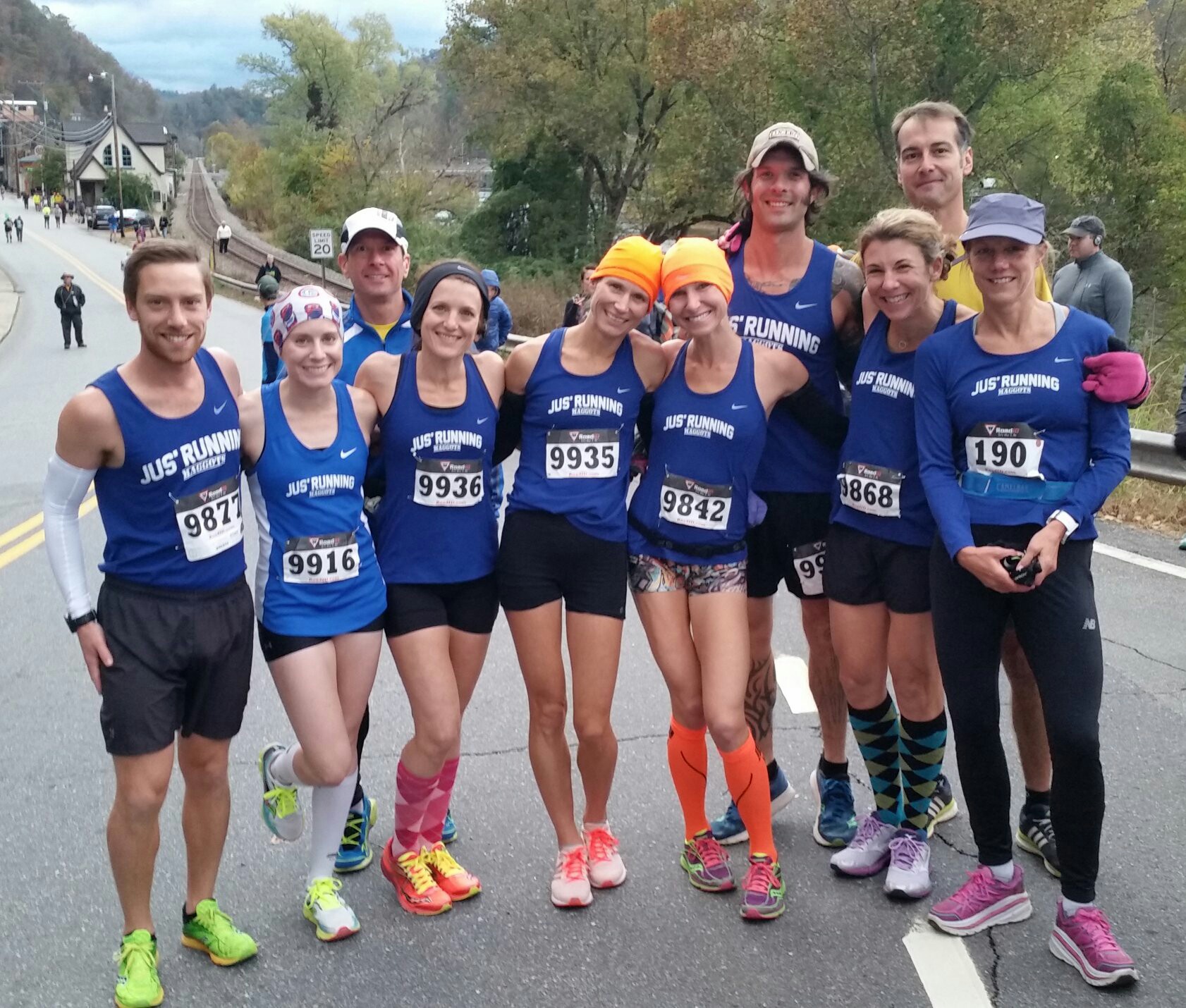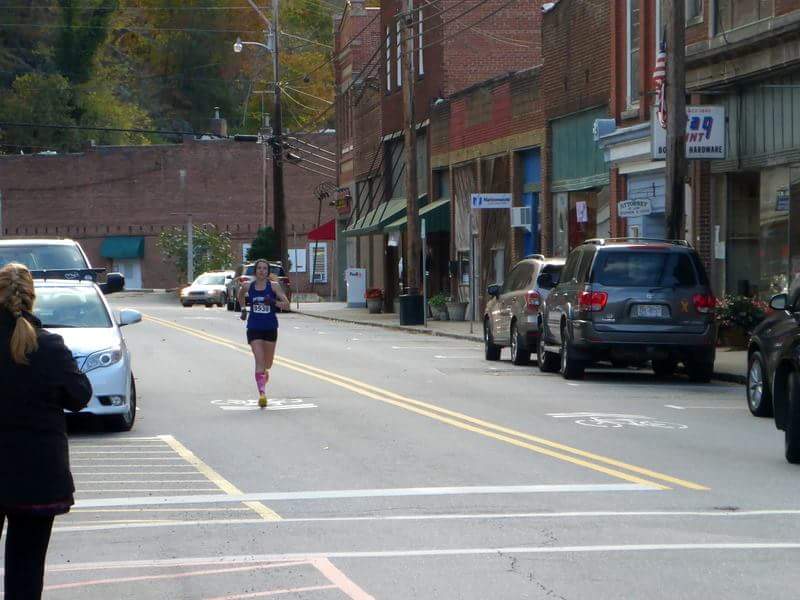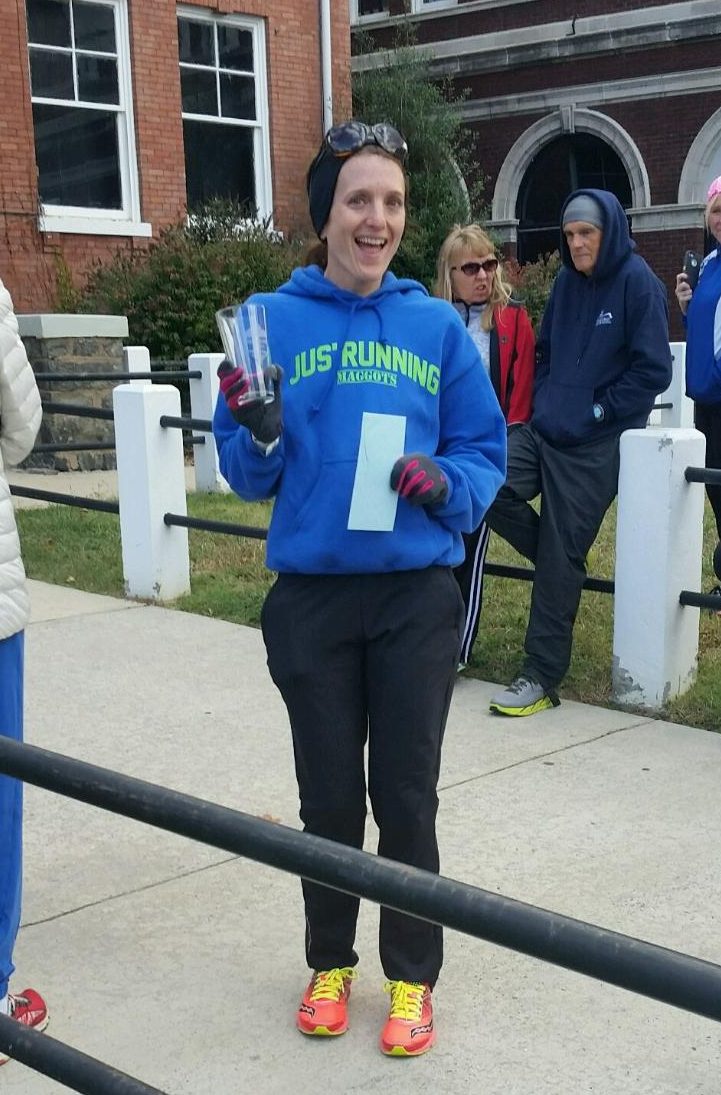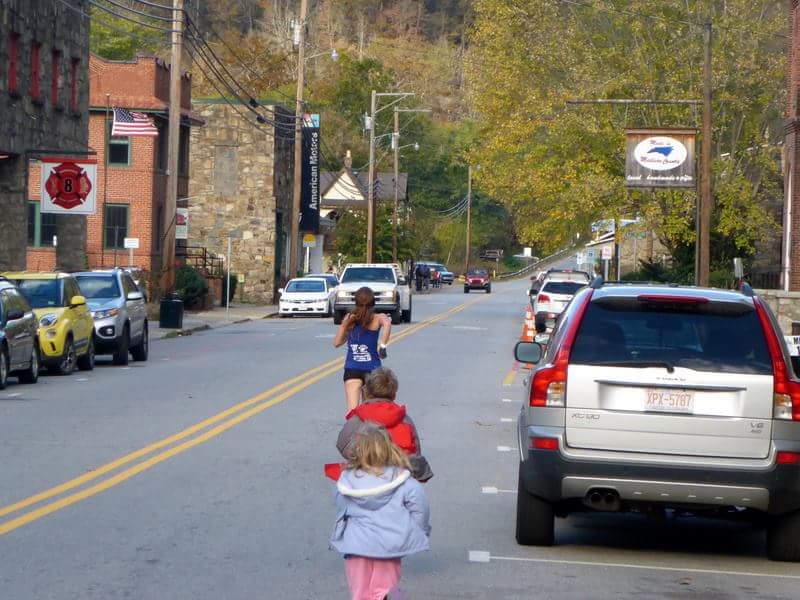How many races out there promise “flat and fast”? Not many in the mountains of Western North Carolina. The new French Broad River Half sounded like an ideal tune up race for the Richmond Marathon: point-to-point gradual downhill along the beautiful French Broad River with a just couple of hills as you enter the the quaint town of Marshall.
Well, the last part of that was right.
The day before the race, the Department of Transportation threatened to cancel the race because they felt the planned rolling closure of just one lane of traffic on the curvy and narrow Riverside Drive would be too dangerous for runners. The race director worked out a compromise to close the entire road, but for only half the distance, so the point-to-point became and out-and-back.
Meaning the two hills at the end of the race turned into four hills at both the beginning and the end. Not what I signed up for.
The elevation gain of the new course would be nearly as much as the entire Richmond Marathon!
After stressing out about the course change for a few minutes, I reminded myself that this was not my goal race and it would still be great practice for my race. Many of my friends and teammates would be out there and I was looking forward to seeing where my fitness was. I’ve been having a good string of workouts lately, so this was a great opportunity to get a confidence boost.

What I wasn’t expecting, however, was that the course change was probably a blessing in disguise.
My plan for the race was to negative split, or run the first half slower than the second. Negative splitting sounds counter-intuitive, but it’s proven as the most effective strategy for racing anything longer than 800 meters. If you can save your energy during the first half, you’ll have more left to push when things feel really hard at the end.
At the start, the temperature was about 45 degrees with 9-15mph winds. The wind was coming up river so it was a tailwind going out from Marshall and a headwind coming back in. This is where the course changed helped; we only had to fight the wind half the time. Unfortunately it was the second half, but still, better than a headwind for 13.1 miles.
First Half: 6:35, 6:54 (hills), 6:45, 6:43, 6:41, 6:42. My plan was to keep the pace between 6:35-40 for the first half. The hill slowed me a little more than I expected, but I felt good for the entire way out. Solid effort, but even breathing. I am learning that concentrating on my breath, much like what’s taught in yoga or meditation is the key to hard effort running. At this pace, I breathe twice as long on the inhale than the exhale.
The second reason the course change was beneficial was being able to cut the corners off the curvy road, or run the tangents. With both lanes closed, we were not forced to stick to the edges of the road and could run in the middle, effectively making the course shorter. Although I learned pretty quickly that due to the steep pitch or camber of the road, running the absolute shortest line between two corners was not ideal, so I stuck closer to the double yellow lines than I would have had it been flat.
Just before the turn-around, I opened a Salted Peanut Butter gel and had about half of it. I’ve been experimenting with adding less water to make the package smaller and it was far too thick and gooey for me. Back to the original recipe! Glad I didn’t find this out in Richmond!
Second Half: 6:30, 6:41, 6:33, 6:32, 6:45, 6:47 (hills), 6:33. Now it’s time to turn up the effort. Right into the headwind. I was hoping that I’d be in a pack of runners so that I could use someone to draft off of, but I was almost completely alone for the second half. I picked up the pace and moved to equal breath in and out. It was never a panicky, hyper-ventilated breath, but it is a hard, yet controlled effort. This kind of breathing is what I really want to master.
At mile 8, my music stopped. Yes, I still run with headphones even though it seems that at every major race, they fail me. I really enjoy running fast with dance music and I feel like it gives me a boost, but I am really starting to reconsider it. It’s extra weight to carry and it’s a bummer when it doesn’t work right. As I focus more on my breathing and the other nuances of racing, I’m starting to think that I should skip them. I ran both Bostons without music due to malfunctions, so I’m thinking I should not bring them to Richmond.
Maybe I’ll practice on my long run this weekend before I decide.
At the second to last hill, I could hear a steady beat of footsteps coming up from behind. I thought there was no way anyone that I had passed could have turned up the pace enough to catch me. I was running such a controlled race that for someone to pass me at this point really didn’t make sense. I turned to see my very fast friend Stu easily gliding by, giving me a quick, “Good job, Claire,” in his British accent. At the turn around, I had been astonished to see that he was behind me, jogging easily with a friend. I learned later that Stu was just using this race as a progression run, running his first mile in 7:27 and his last in 5:48.

For the last mile, I really wanted to run hard. It turned out to be my second-fastest mile, but I have to admit, I was hoping for a very solid kick. Maybe that didn’t exactly happen, but I loved seeing my husband and two kids near the finish. My 5-year-old daughter cheered when she saw me and ran into the road to hug me. I managed to dodge the sweet little race bandit and both kids tried to chase me down to the finish.
One day they will be faster than I am. They have a long way to go.
My official finish time was 1:26:40 or 6:36/mile. It was a PR of over a minute from my last half on the mostly downhill Swamp Rabbit Half I ran in February. That was good enough for 5th place female and 1st place Masters.

I am happy with my effort and I think it was a good indication of my fitness for Richmond. I am certainly glad that I don’t have to run Richmond as fast as this half, so hopefully that will make the slower pace feel that much easier.
I find that I really enjoy the half marathon distance. It’s not so short that you feel like you have to redline yourself the entire time, but not so long that you have to spend a week or more recovering.
I’ll be taking it easy for the next few days, gradually getting back into some easy miles and saving speed for the end of the week.
I can say that while the course was not flat, it was certainly fast and I’ll be back next year!

